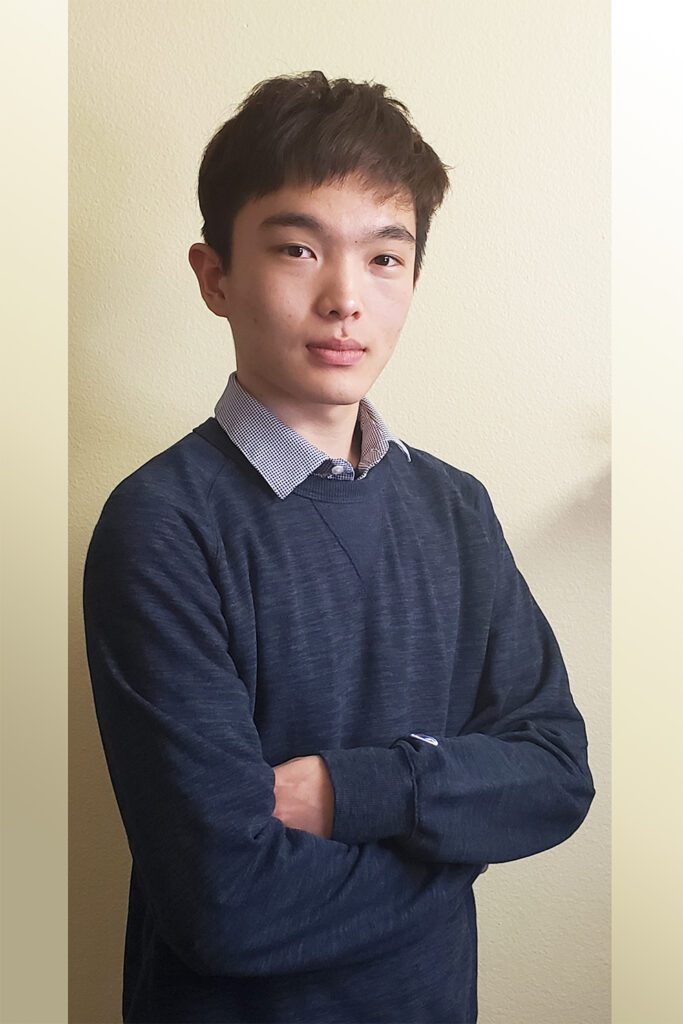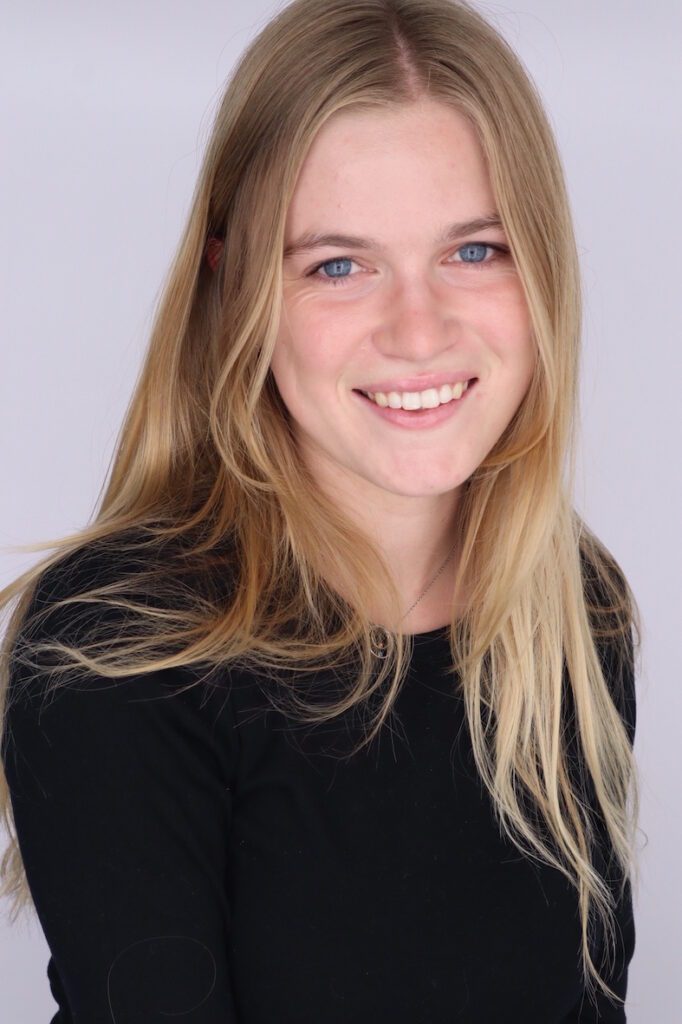Sonia Roedersheimer

Copper (Cu) homeostasis is essential for all organisms as it plays a role in redox and oxygen chemistry in many cellular processes. Cu content in the cell can be maintained through regulating its uptake, export, and distribution. Chlamydomonas, a single-celled green alga, is used as a reference organism to understand Cu homeostasis in organisms. Previous work led to the discovery of CRR1, a transcription factor, which turns on genes in Cu deficiency. Among its targets, CRR1 regulates the CTR family of assimilatory copper transporters. In low nutritional Cu, the transporter […]
Hong Joo Ryoo

My research operates at the intersection of computer science and Lattice Quantum Chromodynamics (LQCD), focusing on quantum computations of real-time three-body correlation functions in 1+1 dimensions. Our primary objective is to determine how quantum computing can effectively simulate three-body interactions that evolve over time within physically realistic quantum states. By implementing the finite-volume formalism, integral equation methods, and other computational techniques, we aim to lay the groundwork for future quantum simulations that operate in real-time and can be extended to higher dimensions beyond 1+1D within the LQCD framework.
Nathan Song

Ultracold atomic lattices are a hot platform for quantum information. By addressing neutral atoms with resonant light in an optical cavity we can induce effects like Rabi oscillations, Rydberg blockade, and many-body coherent interactions. Precise control over such effects enables exploration of complex Ising models, exotic spin liquids, and phase transitions. With the lifetime of our atoms being ~500 ms, however, the gate time (effective light modulation time) of our setup remains a key hurdle. Building on work from Thompson’s group, this project will enable sub-25µs gates on a new […]
Sanoja Sridevan

Angiosperms (flowering plants) are the most abundant type of plant on Earth. Their diversification and expansion during the Late Cretaceous greatly benefited insect pollinators, including bees. However, direct paleontological evidence of this important plant-pollinator interaction is scarce. This summer I will analyze an exceptionally preserved underground sweat bee nest (family Halictidae) from the Late Cretaceous Gulf coastal plain. I will perform and analyze micro-CT data to observe the nest morphology and contents in greater detail. Inside the nest, pollen pallets collected by the female bee to feed the developing larvae […]
Emma Lalor

As an EMT, I believe it is exceedingly important to try to gain a full-picture perspective of patients and providers in order to work with each in the best way possible. One way that this can be done is through the use of graphic medicine, or the implementation of graphic novel, cartoons, and comics in order to convey stories and lessons from emergency medicine. My research is in tandem with many healthcare providers, patients, and educators through the volunteer group, Graphic Medicine. With this project, we aim to create an […]
Nathan Lin

The increasing threat of devastating wildfires in California has sparked interest in improving forest management, initiating work with indigenous tribes to integrate traditional knowledge with modern practices such as prescribed burning and mechanical fuel reduction. The efficacy of these techniques has previously been studied, but less is known about their effects on invertebrate communities. To address this, the Will lab has an ongoing, 4-year sampling project in the San Vicente Redwoods, studying how ground-dwelling arthropods are affected by different levels of mechanical treatment. I will characterize the beetle community in […]
Corina Dunn

In materials with “flat-bands” where electrons have suppressed kinetic energy, effects of electron-electron interactions give rise to exotic quantum phases including superconductivity. While two-dimensional flat-band materials have been broadly studied in recent years, flat-bands are only just beginning to be realized in three dimensional networks. 3D flat-band materials are an interesting laboratory for the competition between superconductivity and magnetism and may even permit their coexistence. This project will focus on synthesizing and characterizing 3D flat-band materials to identify what exotic quantum phases can be discovered and to understand how electron […]
Katie Fitzgerald

The ribosome is conserved across biological organisms and is co-evolved with the genetic code to decode mRNA into proteins. Its macromolecular machinery is highly specific to the canonical set of twenty amino acids, leading to high fidelity yet low diversity of possible protein structure. Expanding the set of amino acids that can be successfully incorporated into proteins could lead to novel peptide structures and functions. The Cate Lab aims to rationally engineer the ribosome to incorporate non-proteinogenic monomers. Cryogenic Electron Microscopy (Cryo-EM) has revealed A2062 as a possible site of […]
Stella Frank

My research explores symbiotic relationships between trees and root-associated fungi, which provide up to 80% of plant nitrogen and phosphorus. These symbioses primarily fall into two categories: ectomycorrhizal fungi, which envelop root cells, and arbuscular mycorrhizal fungi, which penetrate root cell walls. Despite their prevalence, comparative studies of the two systems are lacking. I will quantify nutrient sharing and assess gene expression in Populus trichocarpa (black cottonwood) associated with each type of mutualistic partner. By elucidating nutrient transfer mechanisms, I seek to pinpoint genes facilitating this exchange and illuminate functional […]
Dimple Amitha Garuadapuri

RNA molecules are known to play critical roles in various cellular processes, and understanding their structure provides a lot of insight into their function and the mechanisms they use. Recent advancement with AlphaFold and other protein prediction algorithms have proven the potential of utilizing machine learning techniques to computational predict structure. Solving the problem of protein structure is not only significantly enhancing our understanding, but also streamlining the drug delivery and therapeutic development process. Being able to computationally predict accurate RNA structures would similarly enhance our understanding of noncoding RNA […]